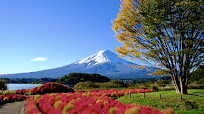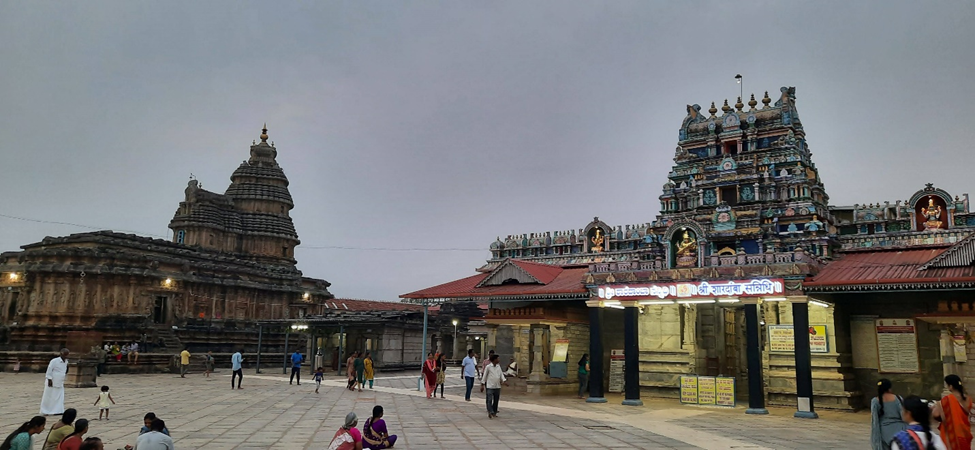Travelogue – Mount Fuji – Japan – 10 December 2023
It was a sunny day (we
are lucky) that too in the month of December in Japan, we started our day tour
to Mount Fuji (Fujisan).
This time we (my wife
Udaya, and Nephew Indrajit) took a Toyota Cruiser (Seven seater) and started
our tour by road.
Temperature outside was
in single digit, and we were wondering, how it will be at Mount Fuji.
En route we were
astonished to see the infrastructure of Japan... amazing… they make so many
tunnels (few tunnels are more than 2km long), and fantastic roads. Safety of
people is the top priority for the government.
Mohit was driving the
car (which we hired in Yokohama) and he was too good to explain us every place
and was fluent in English. (He hails from Madhya Pradesh, India).
The drive was too good,
and the greenery was awesome…
When we entered the
first station (foot of Mount fuji) we could feel the cold. Both sides of the
road was full of greenery, (Autumn is the best season to visit, though), and we
could see snow fall at many places once we reached fourth station. (There are
ten stations in mount fuji at different elevations, and up to fifth station
vehicular traffic is permitted. Fifth to tenth only trekking is allowed).
Google for more details on this trekking, which is one of the best experiences,
any trekker can have. Reaching the Summit.


We reached fifth
station around 10AM, and wow. What a beauty... Fujisan… Fantabulous…
We were on a photo
spree and selfie fever….
Then we decided to
enjoy the scenic beauty of Fujisan…. Spent about an hour and a half here.
It is very difficult to
write our experience in words, it can only be felt….
Mount Fuji
Mt. Fuji is a stratovolcano that boasts of
the highest altitude (3,776 m) in Japan. Since it made a big eruption in
1707, it has been dormant. Its lava has low viscosity and flows relatively
easily, forming unique geological features such as lava caves and lava
tree molds.
- Mt. Fuji offers a splendid vertical
distribution of plants from low to high hills.
- Similar to the vertical distribution of
plants, the fauna also varies according to the altitude.
- The whole area of Mt. Fuji is designated
as a national park in order to protect such special and precious natural
environment.
- Since old times, Mt. Fuji has been a
sacred mountain and worshipped by people. In the neighborhood of Mt. Fuji,
there are many historic and cultural heritages associated with Mt Fuji
worship called Fujiko, which flourished in the Edo period.
- Furthermore, the graceful shape and
majestic view of Mt. Fuji has inspired various works of art such as poems,
paintings and literature and been admired since old times.
- Mt. Fuji is designated as a Special Place
of Scenic Beauty in order to protect the beauty that gave birth to such
culture
UNESCO World Heritage
"Fujisan"
sacred place and source of artistic inspiration
Next, we started
towards Kawaguchi lake,, it took about 30 minutes to reach.
Mount Fuji Panoramic
Ropeway
Long long queue… (I
always admire the queue system of Japan, and the way they respect and follow
that system.. amazing.. no one breaks the queue..)


The Mount Fuji
Panoramic Ropeway ascends 400 meters from the eastern shore of Lake Kawaguchiko to an observation
deck near the peak of Mount Tenjo. From the observation deck, which sits more
than 1000 meters above sea level, there are panoramic views of the lake below
and of Mount
Fuji.
While most visitors
take a round trip on the ropeway, there is also a hiking trail from the
observation deck down the forested mountain slope which takes about 30 minutes
to descend. A different trail leads from the observation point 300 meters
uphill to a small shrine at the summit of Mount Tenjo, from there the trail
continues on to Mount Mitsutoge, a popular day hike with good views of Mount
Fuji.
We spent almost an hour
here.. amazing view of Fujisan and the Kawaguchi lake.
As we were running out
of time, we skipped the boating at Kawaguchi lake, and moved to Chureito
Pagoda.
I never imagined this
Pagoda was at a height of 1000M. we need to climb all the way and started
feeling tired.
At the foot hill of
this pagoda, we prayed at a shrine,,, Arakura Sengen Shrine..
Arakura Fuji Sengen
Shrine
was established in 705 at the foot of Mount Fuji. It enshrines the god of the
Kai province (current Yamanashi prefecture) area. Inside the shrine grounds are
650 cherry blossom trees that bloom every spring. Visit the park located in the
shrine for a breathtaking view of Mount Fuji and the goju no to five-storied
tower. In the spring, you can see Mount Fuji and the cherry blossoms all in one
view.
I got the Goshuin (my
first in Japan) at this shrine.
What is Goshuin?
Literally translated to
'honorable red seal', goshuin is a red stamp that can be obtained
from Shinto shrines or Buddhist Temples in Japan. Dating
back as early as around 1300 years ago, the practice of goshuin is thought to
have originated as proof of one's devotion.
Dating back as early as
around 1300 years ago, the practice of goshuin is thought to have originated as
proof of one’s devotion. Pilgrims would handwrite shakyo (Buddhist
sutras) and dedicate them to Buddhist temples, and in exchange, receive a
goshuin from the temple’s nuns and monks.
In modern times, the
practice of collecting goshuin has changed slightly. Rather than copying and
devoting sutras, visitors can pay a fee (usually ranging from ¥300 to ¥1000) or
make a donation to a temple or shrine to receive a goshuin. Members of the
younger generation have also been taking up collecting unique goshuin as a
hobby, with many taking to social media to show off cute, seasonal or
remarkably aesthetic goshuin from rarely-visited temples and shrines.
Most
goshuin are stamped on the pages of a book. These books, officially known
as goshuincho , serve as a kind of record or proof of faith.
It houses evidence of one’s pilgrimages to various shrines and temples during
their lifetime. These books are still used by goshuin collectors today, though
they probably hold less spiritual significance to their users.
Chureito Pagoda
The Chureito Pagoda is
a five storied pagoda on the mountainside overlooking Fujiyoshida City
and Mount Fuji off in the
distance. The pagoda is part of the Arakura Sengen Shrine and was built as a
peace memorial in 1963 nearly 400 steps up the mountain from the shrine's main buildings.
The location offers
spectacular views of Mount Fuji in combination with the pagoda, especially
during the cherry blossom season in
mid-April when there are hundreds of trees in bloom and during the autumn color season which usually takes place in the
first half of November. The spot is particularly popular among photographers as
it allows for some wonderfully stereotypical shots of Japan.
Very scenic place and
should come here again, next year during Autumn.
We could not make it to
Lake Yamanaka, which is one of the five lakes of Kawaguchico, which we will
cover next time. I was told that the bus drive here is awesome, as the bus
straight barges into the lake from land. (James bond 007)
I suggest staying at Kawaguchico
for at least 2 days, to cover the entire spectrum of scenic places and lakes.
Food
I wanted to treat the
family with famous okonomiyaki, and we went to a restaurant called “dotonbori”
in Kawaguchi. Wow, awesome. This restaurant is DIY (Do it yourself type) that
is you cook your food. (See the photos).
I was watching the next
table to understand what they are doing, and just followed the same. (This
okonomiyaki was different from the one we had at Hiroshima)
But very tasty, and the
warm sake was too good. (Sake is served either as cold or warm) during the
winter, warm sake is too good. (Sake is a Japanese country liquor)
Feeling exhausted we
embarked our journey back to Yokohama, feeling very tired, physically, but
blissful mentally.
Thanks to udaya for the
idlis, (a south indian food item) and Indrajit for his patience to shoot around 500 pictures of us.
Sayanora.
vsathyamurthy@gmail.com
















Comments
Post a Comment